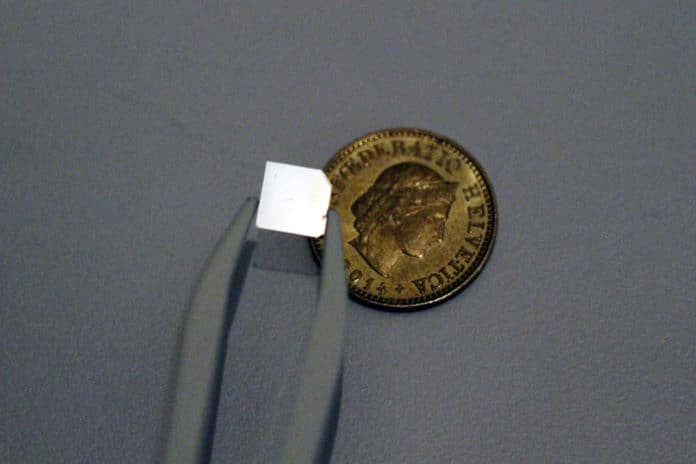The phonons, a quantum mechanical description of an elementary vibrational motion, that can potentially describe the sound at tiny scales. Just as light waves can be described as photons or particles of light, phonons are a way to describe sound waves that emerge from the complicated interactions of the fluid molecules.
Singe phonons can be observed at ultracold temperatures in and in precisely engineered, microscopic materials that researchers must probe in a vacuum.
Now, for the first time, scientists at the MIT and Swiss Federal Institute of Technology have created and observed a single phonon in a common material at room temperature. They created phonons in a piece of diamond sitting in the open air at room temperature.
Scientists have developed a technique to probe materials for quantum vibrations. According to scientists, the method can be used to probe other common materials also that may make ideal interconnects, or transmission lines, between the quantum computers of the future.
To observe single phonons at room temperature, scientists required specially engineered materials to harbor very few phonons, at relatively high energies. The materials are then submerged in near-absolute-zero refrigerators to assure that the surrounding thermal energy was lower than the energy of the phonons in the material.
Vivishek Sudhir, a postdoc at MIT’s Kavli Institute for Astrophysics and Space Research, said, “If that’s the case, then the [phonon] vibration cannot borrow energy from the thermal environment to excite more than one phonon.”
Scientists used Raman scattering, in which they shot a pulse of photons into the material for photon- phonon interaction. When that happens, the photon should reflect out at different energy imparted to it by the interacting phonon.
Sudhir said, “In this way, we were able to detect single phonons, though at ultracold temperatures, and in carefully engineered materials.”
“What we’ve done here is to ask the question, how do you get rid of this complicated environment you’ve created around this object, and bring this quantum effect to our setting, to see it in more common materials. It’s like democratizing quantum mechanics in some sense.”
During the study, scientists performed their experiments on the diamond. Phonons operate at high frequencies in diamond, so high that the energy of a single phonon is higher than the surrounding thermal energy.
Scientists sent high-frequency laser pulses, consisting of 100 million photons each, into the diamond. The team would then measure the decreased frequency of the photon involved in the collision — confirmation that it had indeed hit upon a phonon, though this operation wouldn’t be able to discern whether one or more phonons were excited in the process.
To decipher the number of phonons excited, scientists sent a second laser pulse into the diamond, as the phonon’s energy gradually decayed. For each phonon excited by the first pulse, this second pulse can de-excite it, taking away that energy in the form of a new, higher-energy photon. If only one phonon was initially excited, then one new, higher-frequency photon should be created.
To confirm this, the scientists placed a semitransparent glass through which this new, higher-frequency photon would exit the diamond, along with two detectors on either side of the glass. Photons do not split, so if multiple phonons were excited then de-excited, the resulting photons should pass through the glass and scatter randomly into both detectors. If just one detector clicks, indicating the detection of a single photon, the team can be sure that that photon interacted with a single phonon.
Sudhir said, “It’s a clever trick we play to make sure we are observing just one phonon.”
“The probability of a photon interacting with a phonon is about one in 10 billion. In our experiments, we blasted the diamond with 80 million pulses per second to detect about 1 million photon-phonon interactions. In the end, we found, with statistical significance, that we can create and detect a single quantum of vibration.”
When sending in their second laser pulse to verify that single phonons were indeed being created, the scientists delayed this pulse, sending it into the diamond as the excited phonon was beginning to ebb in energy. In this way, they were able to glean the manner in which the phonon itself decayed.
Sudhir said, “So, not only are we able to probe the birth of a single phonon but also we’re able to probe its death. Now we can say, ‘go use this technique to study how long it takes for a single phonon to die out in your material of choice.’ That number is handy. If the time it takes to die is very long, then that material can support coherent phonons. If that’s the case, you can do exciting things with it, like thermal transport in solar cells, and interconnects between quantum computers.”
The study is published in Physical Review X.
